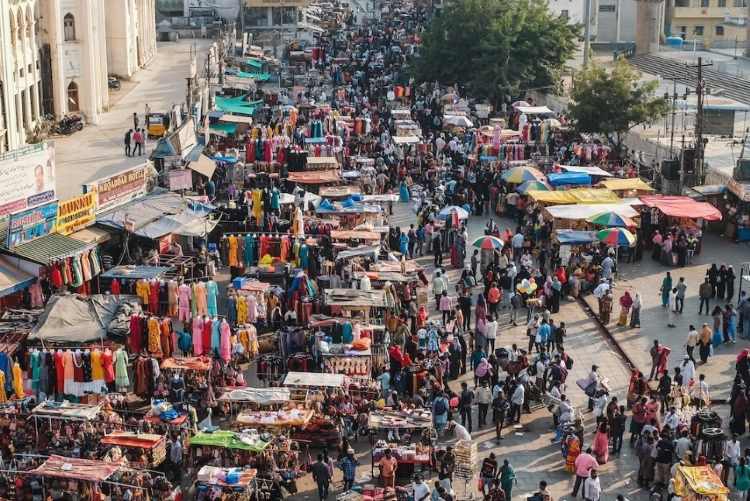
Economic development through a new lens: In the intricate world of economics, where numbers and statistics often dominate discussions, we often find ourselves immersed in debates about Gross Domestic Product and Gross Value Added. GDP and GVA, which categorise economic activity into sectors such as agriculture, industry, and services, have long served as the bedrock of economic analysis. However, a study of India’s complex economic ecosystem will lead us down a different path – one that challenged the conventional approach and encouraged me to look at the economy from an entirely new perspective.
Evaluating India’s economic development through the expenditure approach, as we are traditionally accustomed to, might not provide the full picture. Instead, one must view the nation’s economy through the lens of institutional economic participants, considering the financial positions of key players.
READ I Climate change: Global South suffers from developed world’s inaction
New approach to economic development
The three principal domestic participants in any economy are the government, comprising both central and state levels; the corporate sector, which encompasses private and public entities, financial and non-financial institutions; and the household sector, encompassing individuals, small businesses, and the self-employed. These three sectors constitute the core of a nation’s domestic economy, while the rest of the world represents the external sector, interacting with these domestic participants.
These participants primarily engage in three key economic activities — consumption, investment, and trade. The government and households primarily serve as consumers, while the corporate sector predominantly takes on the role of an investor. Foreign trade involves importing and exporting goods and services. By categorising economic actions in this manner, it becomes easier to understand and analyse the impacts of various policies and economic changes.
Lessons in economic realities
As we delve deeper into this new framework of economic development, several critical lessons emerge. One key takeaway is that targeting fiscal deficit in isolation can often be an ineffective strategy. Fiscal policies must be approached holistically, recognising the intricate web of relationships between the government’s investments and savings, the private sector’s surplus, and the current account deficit (CAD). Let us examine this formula:
Core Fiscal Deficit = Private Sector Surplus + Current Account Deficit (CAD)
To achieve fiscal deficit targets, the government must either reduce its own savings or increase investments. However, this often has unintended consequences. Adjusting one element inevitably affects the others, making it essential to understand these relationships to craft effective policies.
Temptation of cross-country comparisons
Another crucial lesson is the danger of blindly comparing India’s economic policies to those of other nations, such as the United States or China. Each country possesses a unique cultural, political, and institutional context that profoundly influences the suitability of specific policies. What works for one nation may not necessarily work for another.
For instance, while China’s investment-heavy growth model served its purpose in the past, India’s diverse stage of development and robust consumption base require a different approach. It is crucial to avoid the allure of one-size-fits-all solutions and instead tailor strategies that align with India’s unique context and needs.
Embracing the healing decade
The Indian economy is at a critical juncture. The financial positions of households and the corporate sector have weakened, and a myopic focus on short-term growth may lead to dire consequences in the future. Here is a bold yet essential step for India’s policymakers: accepting the 2020s as a healing decade. During this period, it is imperative to implement policies that allow these sectors to rebuild their financial positions, even if it means slower short-term growth. For example, investing in education and skilling programs can enhance household incomes, thereby stimulating consumption. Similarly, incentivising corporate investment in innovation and technology can lead to long-term growth.
This approach to economic development may require a shift in mindset, as it means prioritising financial stability over rapid expansion. However, it is a necessary recalibration to ensure sustainable and robust economic development in the long run.
As India stands on the cusp of a transformative decade, embracing this new perspective may well be the key to unlocking its full economic potential and ensuring the prosperity of its citizens for generations to come. Shifting the lens from traditional GDP analysis to examining the financial positions of key economic participants provides a more nuanced and insightful understanding of India’s economic dynamics. By recognising the intricate relationships between government, corporate, and household sectors and taking a holistic approach to fiscal policy, India can navigate its path to sustainable economic growth successfully.
In a world of ever-evolving economic challenges, it is imperative that India adapt an analytical frameworks and policy approaches that suit the unique circumstances of the nation. In doing so, we pave the way for a prosperous and resilient India, ready to tackle the opportunities and challenges of the future with confidence and insight.
(This article is the edited transcript of a lecture by Nikhil Gupta, Chief Economist at Motilal Oswal, at a webinar organised by EGROW Foundation.)
